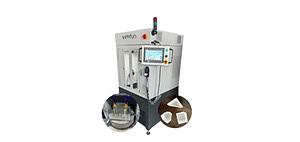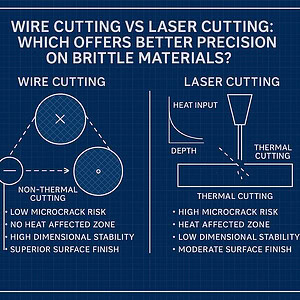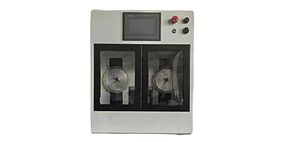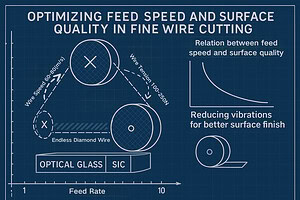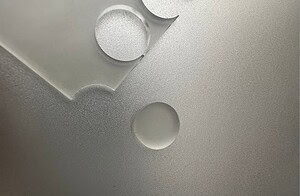Maintaining a wire cutting machine is not only about replacing the wire. True cutting stability comes from a systematic approach that considers the condition of the wheels, groove wear, wire tension performance, and the cleanliness of key mechanical components. When operators follow a consistent maintenance checklist, wire cutting systems achieve higher uptime, stronger cutting stability, and more consistent results—especially when handling brittle and high-value materials.
This guide provides engineering-grade wire maintenance tips that help improve reliability, reduce micro-vibration, and maintain long-term cutting quality for endless diamond wire saws and fine-wire cutting systems.
Maintenance Tips for Stable Wire Cutting
Wire cutting performance is highly sensitive to mechanical condition. Wire deformation, wheel wear, contamination, and lubrication failures can all affect surface finish, dimensional accuracy, and material integrity. Proper maintenance ensures:
- stable wire tracking
- correct groove alignment
- reduced friction
- minimized vibration
- lower risk of unexpected breakage
For operations processing optical glass, sapphire, SiC, ceramics, or graphite, maintenance has a direct impact on cutting stability and yield.
Understanding Wire Replacement Intervals
Wire replacement intervals are not determined by a fixed schedule. They must be based on material hardness, feed load, cutting hours, and groove wear conditions.
A practical engineering approach is to observe the wire’s mechanical and visual indicators. Wire should be replaced when it shows any of the following:
1. Visible Flattening or Polishing Marks
If the diamond wire surface becomes polished, smooth, or flattened, the abrasives have been worn down. This reduces cutting efficiency and increases heat generation.
2. Uneven Wire Behavior During Rotation
If the wire oscillates, bends, or visually shifts from its central path, this signals internal fatigue or uneven tension distribution.
3. Increased Vibration or Noise
Unusual acoustic changes often indicate micro-damage on the wire or wheel alignment issues.
4. Drop in Cutting Quality
Signs include:
- wider kerf width
- poorer surface smoothness
- increased material chipping
- inconsistent thickness
Replacing the wire early prevents sudden breakage and reduces scrap rates.
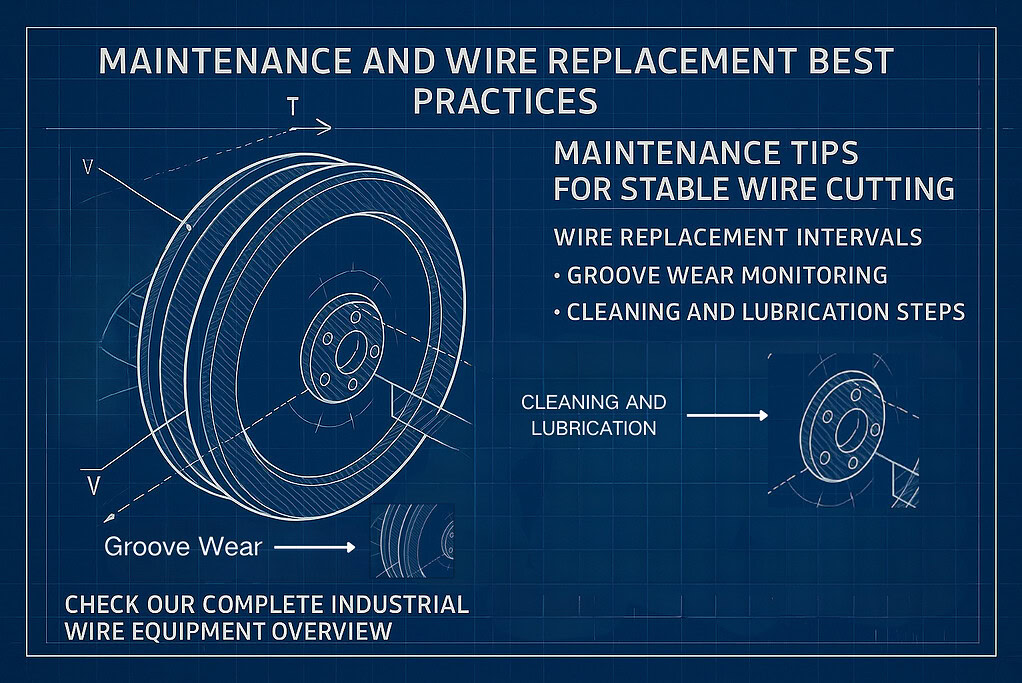
Monitoring Groove Wear
Groove wear is one of the most critical maintenance factors in wire cutting systems. Wheels with polyurethane or rubber coatings gradually develop groove deformation from prolonged wire contact.
Groove wear affects:
- wire alignment
- cutting stability
- tension response
- vibration levels
- surface finish quality
How to detect groove wear
Engineers should check:
✔ Groove rounding
If the groove edges become rounded or misshaped, wire tracking becomes unstable.
✔ Groove enlargement
If the groove expands beyond tolerance, the wire cannot maintain accurate positioning.
✔ Groove asymmetry
Uneven wear indicates non-uniform loading or imbalance.
✔ Surface hardening or cracking
Aging polyurethane can harden, causing slip or uneven traction.
✔ Recommended tolerance
- normal groove wear limit: 0.2–0.5 mm
- beyond 0.5 mm → wheel should be resurfaced or replaced
Maintaining the groove correctly ensures cutting stability and consistent wire guidance.
Cleaning and Lubrication Steps
Contamination in bearings, shafts, or housings can directly reduce cutting performance. Dust from SiC, graphite, and ceramics easily enters rotating parts unless cleaning is performed regularly.
1. Remove dust and debris
Use compressed air or lint-free cloths to remove fine powder from:
- bearings
- wheel hubs
- motor interfaces
- mounting brackets
2. Clean outer race surfaces
Any contamination between the wheel and wire increases friction and causes micro-vibration.
3. Apply lubrication to bearings
Use appropriate grease or oil depending on load and temperature. Proper lubrication ensures:
- smoother rotation
- reduced friction
- longer component lifespan
- stable wire tracking
4. Inspect seals and covers
Damaged seals accelerate contamination and require immediate replacement.
Routine cleaning and lubrication protect mechanical components and ensure stable long-term performance.
Full Maintenance Checklist (Engineering Version)
Daily
- Inspect wire for shine, flatness, or damage
- Check wheel grooves for dust accumulation
- Verify tension and speed readings
- Clean dust from the window and working chamber
Weekly
- Measure groove wear depth
- Check wheel parallelism and alignment
- Clean pulley housings and bearing interfaces
- Verify wire path angle and feed positioning
Monthly
- Disassemble and clean bearings
- Re-lubricate all rotating parts
- Inspect wheel balance and replace if deviation exceeds tolerance
- Replace worn wires or wheels
Using a structured checklist keeps cutting stability consistent and prevents production interruptions.
Conclusion
Long-term cutting stability depends on more than just wire replacement. Operators must combine wire inspection, groove wear monitoring, systematic cleaning, and lubrication steps to maintain a high-performance cutting system.
These maintenance steps apply to most industrial wire saws used for precision brittle-material cutting
A well-maintained wire cutting machine delivers:
- improved cutting stability
- better surface finish
- minimized vibration
- reduced kerf width variation
- longer wire and wheel lifespan
By following these engineering-grade wire maintenance tips, manufacturers can achieve higher yield and greater reliability in the cutting of brittle, high-value materials.
👉 Check our complete industrial wire equipment overview
https://www.endlesswiresaw.com/wire-saws/maintenance
FAQ (5 Questions)
1. How often should wire be replaced?
Wire replacement depends on material hardness, tension level, operating hours, and groove wear. Replace the wire when flattening, oscillation, or surface polishing is observed.
2. What causes uneven groove wear?
Uneven wear usually results from misalignment, improper tension, wheel imbalance, or long-term cutting under asymmetric load.
3. How does groove wear affect cutting stability?
Groove wear causes the wire to wander, increasing micro-vibration and degrading surface quality.
4. Why is bearing cleaning important?
Contaminated bearings increase rotational friction, which translates directly into wire vibration and cutting instability.
5. What is the fastest way to check machine condition daily?
A quick visual check of wire condition, groove cleanliness, and tension reading—combined with dust removal—is enough to detect most early issues.


